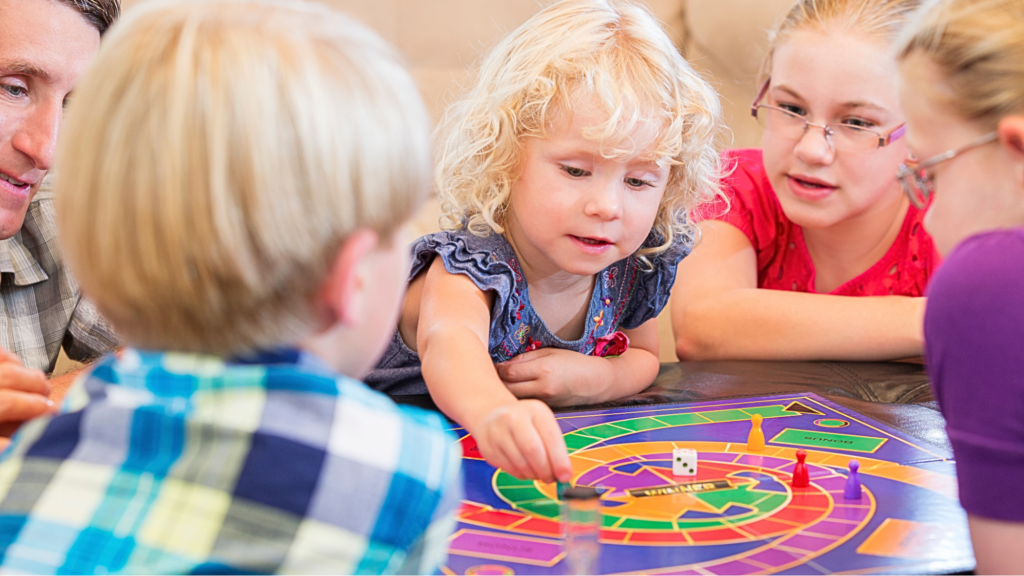Parenting in a Digital World: Fostering Healthy Relationships and Connection with Your Child

In today’s fast-paced, tech-driven world, smartphones have become central to our daily lives. They’re our work assistants, our entertainment hubs, and our constant companions. But as much as our phones keep us connected to the world, they can also subtly disconnect us from the people right in front of us — especially our children. In the hustle and bustle of daily life, we’ve come to rely on our phones to fill time, keep us entertained, and even calm our kids. But this convenience is not without its consequences, particularly when it comes to the emotional and social development of our children.
The Challenge of Disconnecting
Times when we are forced to disconnect from our phones — like when we’re playing a sport, swimming at the beach, or involved in a theatrical performance — are often the moments that foster the deepest connections and personal growth. These activities demand our full attention, require both hands, and leave no room for distractions. And it’s in these moments that children (and adults) often experience their most meaningful interactions, both with each other and with themselves.
It is easy to say, “just put the phone down.” But we know it’s not always that simple. In a world where notifications are constant and the urge to check our screens is almost reflexive, taking a break from screens can feel like a challenge. But if we want our children to develop healthy social skills, emotional intelligence, and resilience, we need to be intentional about creating space for authentic connection.
Creating Space for Connection and Collaboration
It’s crucial that parents begin to pay attention to how often we use our phones as a way to fill time or pacify our children. By being mindful of our phone use, we can start to model the behaviors we want to see in our children. Setting clear boundaries for screen time — not just for our kids but for ourselves — is an important first step. Adults are constantly tempted by their phones. The phone serves as a quick fix to fill a gap in our day — a way to distract ourselves when we’re standing in line, waiting for our food at a restaurant, or stuck in traffic. We mindlessly scroll through social media, check work emails, or read an article, and in the process, we tune out the world around us, including our children. A simple interaction, like a meaningful conversation, gets lost in the shuffle.
The Shift in Parent-Child Interactions
Author and speaker Simon Sinek has spoken extensively about how our constant engagement with our phones impacts our relationships, both with adults and children. He points out that even when we make the conscious effort to be present, it’s difficult to overcome the fact that everyone else around us is glued to their own screens. Whether in a team meeting or social gathering, having your phone visible on the table signals that the people in the room aren’t your top priority — the phone is. The same dynamic happens in our homes.
When we’re sitting with our children at the dinner table or waiting for a plane, what do they see? They see us absorbed in our phones, and, inevitably, they get the message that the phone is more important than they are. No matter how much we try to explain that we’re working, reading, or handling something important, all they see is us looking away from them, disengaging from the moment.
This subtle shift has deep implications for how children develop social and emotional skills and connect with their parents. Kids learn best through observation and mimicry. When we’re constantly checking our phones, we unintentionally teach them that devices are more interesting than face-to-face interaction. Over time, this weakens the emotional bond between parent and child and sets a dangerous precedent for how they engage with others.
The Importance of Self-Regulation and Resilience
As parents, one of our most important roles is to help our children develop resilience and self-regulation. Face-to-face interactions build connection and co-regulation. As a child gets older, they build self-regulation skills to calm themselves in the face of stressors. But these skills are modeled by and learned from caregivers.
When we use screens as a way to pacify or distract our children, we may be inadvertently stunting these critical skills. When children are constantly given a screen to fill a transition or quiet them down, they miss out on the opportunity to develop their ability to wait, to cope with frustration, and to engage in meaningful social interactions with the people around them.
Think about how often you rely on a screen to fill an awkward moment or calm your restless child. When your child starts fidgeting in the grocery line, it’s easy to pull out the phone and press play on a video. While this momentary peace may seem harmless, it’s a bit like using a “digital pacifier.” It pacifies the child, yes, but it also replaces other critical developmental experiences, like navigating the social nuances of waiting or boredom. Instead of learning to tolerate a few minutes of downtime, or perhaps use the time to be curious, children quickly become accustomed to filling every idle moment with screen time.
But what happens when the phone isn’t available? Kids are forced to engage with their environment, with their emotions, and with the people around them. These small opportunities help them learn patience, self-control, and empathy under your guidance. These are the building blocks for emotional intelligence, which helps children develop resilience when life inevitably throws challenges their way.
Try these simple strategies to foster healthier relationships and social skills:
- Set Phone-Free Zones: Establish specific times or places in your day when phones are put away, like during family meals or while playing with your child. Use this time to connect with your child without distractions.
- Embrace Boredom: Allow your child (and yourself) to experience moments of boredom. This is where creativity and self-regulation can begin to thrive.
- Practice Active Listening: When you’re talking to your child, put your phone down. Give them your full attention, and encourage them to do the same when engaging with you or others.
- Engage in Screen-Free Activities: Find activities that require active engagement and can be done without screens. Take a walk, cook a meal together, or play a game that promotes communication and cooperation.
- Be Mindful of Transitions: Instead of automatically reaching for a phone when there’s a lull in activity, engage your child in conversation or offer them a small task or game to focus on while you wait.
In Conclusion
Parenting in a digital world means being intentional about how we use technology and how it affects our relationships. While screens can be helpful tools for entertainment and productivity, they shouldn’t replace the rich, real-world connections we make with our children. By prioritizing face-to-face interactions, setting boundaries around screen time, and modeling healthy digital habits, we can help our kids build the social skills, emotional intelligence, and resilience they need to thrive — both online and in the real world.
* This blog was generated with AI support from the book, Uniquely Human: Raising Leaders and Creators in an AI World set to be published later this year. Click here to be notified when the book becomes available.
About the Author

Aubrey Schmalle OTR/L is a pediatric occupational therapist who specializes in sensory integration, behavior, and learning. She is an author, speaker, and parent of a Gen Zer. Learn more about Aubrey and her work by visiting aubreyschmalle.com
PREVIOUS POST
NEXT POST